Wood production is a crucial industry that plays a significant role in the global economy. The process of sawing, specifically in sawmilling, is essential for transforming raw timber into usable wood products. Advancements in technology have revolutionized sawing techniques and technologies, resulting in improved efficiency, precision, and productivity. For instance, consider a hypothetical scenario where a traditional sawmill adopts modern computer-controlled machinery to enhance their operations. This article aims to explore various sawing techniques and technologies utilized in wood production, providing insights into their benefits, challenges, and potential impact on the industry.
In recent years, there has been an increased focus on optimizing the cutting process through developments in automation and digitalization. Computer Numerical Control (CNC) machines have become prevalent in many industries due to their ability to execute precise cuts with minimal human intervention. In the context of sawmilling, CNC machines offer numerous advantages such as reduced material waste, enhanced accuracy of sizing and shaping lumber components, and improved worker safety by minimizing manual labor requirements. Furthermore, these sophisticated systems allow for real-time monitoring and adjustments during the cutting process based on pre-programmed specifications or sensor feedback. Consequently, incorporating advanced sawing technologies can result in higher yields, greater product consistency, and overall cost savings for sawmills.
One of the key benefits of advanced sawing technologies is their ability to reduce material waste. Traditional sawing methods often result in significant amounts of wood being lost due to inaccurate cuts or inefficient use of raw timber. CNC machines, on the other hand, can optimize the cutting process by accurately following pre-programmed patterns and minimizing unnecessary cuts. This not only maximizes the yield from each log but also reduces the amount of scrap generated during production.
Another advantage of advanced sawing technologies is improved accuracy in sizing and shaping lumber components. CNC machines can precisely cut wood according to predetermined measurements, resulting in consistent and uniform products. This is particularly important for industries that require standardized dimensions for their wood products, such as construction or furniture manufacturing. By ensuring precise sizing and shaping, advanced sawing technologies contribute to higher-quality end products with minimal variation.
Furthermore, incorporating advanced sawing technologies enhances worker safety by reducing manual labor requirements. Traditional sawmilling processes involve operators manually guiding the logs through the cutting tools, which poses inherent risks. With CNC machines, operators have a more hands-off role as they program and supervise the cutting process from a safe distance. This minimizes exposure to potential hazards and decreases the likelihood of accidents or injuries.
However, it is important to note that adopting advanced sawing technologies also comes with its challenges. The initial investment cost can be substantial, especially for small-scale or traditional sawmills that may not have the financial resources to upgrade their equipment. Additionally, operating and maintaining these complex systems may require specialized training for operators and technicians.
In conclusion, advancements in sawing techniques and technologies have revolutionized wood production by improving efficiency, precision, and productivity. Computer-controlled machinery like CNC machines offers numerous benefits such as reduced material waste, enhanced accuracy in sizing and shaping lumber components, and improved worker safety. While there are challenges associated with adopting these technologies, their potential impact on the industry is significant, leading to higher yields, greater product consistency, and overall cost savings for sawmills.
Sawing Principles and Methods
Imagine a scenario where a sawmill is tasked with cutting large logs into smaller pieces of timber. To accomplish this, the mill utilizes various sawing techniques and technologies to optimize productivity and efficiency. This section explores the fundamental principles behind these methods and their significance in wood production.
One commonly employed technique is “ripping,” which involves cutting logs along their length to produce boards or planks of desired dimensions. Ripping can be achieved using different types of saws, such as band saws, circular saws, or frame saws. Each type offers its unique advantages based on factors like cost-effectiveness, speed, accuracy, and flexibility.
To illustrate further, consider a hypothetical case study comparing different ripping methods:
- Band Saw: Offers precise cuts but may require more time due to slower feed rates.
- Circular Saw: Provides faster cutting speeds but may result in slightly rougher surfaces.
- Frame Saw: Suitable for thicker logs but requires higher maintenance due to blade tension adjustments.
Beyond ripping techniques, other methods like crosscutting and resawing are crucial in transforming raw materials into valuable products. Crosscutting refers to cutting logs perpendicular to their grain direction, yielding shorter sections used for specific applications. Resawing involves slicing thick lumber horizontally to obtain thinner boards that maximize material usage.
The importance of these techniques becomes evident when considering their impact on overall wood production processes. Efficient implementation not only helps meet market demands promptly but also minimizes waste generation while maximizing resource utilization. It allows mills to achieve optimal yields from every log processed while maintaining quality standards.
In the subsequent section about “Types of Sawing Machines,” we will explore how specific equipment plays a vital role in executing these techniques effectively. By understanding both the principles and machinery involved in wood processing operations, one gains insights into enhancing productivity and achieving sustainable outcomes within the industry.
Types of Sawing Machines
Sawing Techniques and Technologies in Wood Production: Insights for Sawmilling
Section H2 Transition: Having discussed the fundamental principles and methods of sawing, it is now imperative to explore the various types of sawing machines employed in wood production. Understanding these different technologies can provide valuable insights into optimizing the efficiency and quality of sawmilling operations.
To illustrate the significance of selecting appropriate sawing machines, let us consider a hypothetical case study involving a large-scale timber manufacturer. This company was facing challenges in maximizing their productivity while maintaining consistent product quality. By adopting advanced sawing technologies, they were able to address these issues effectively, resulting in improved operational outcomes.
When evaluating the different types of sawing machines available, several crucial factors need consideration:
- Precision: The level of accuracy achieved during cutting affects both product quality and waste reduction.
- Speed: Higher cutting speeds enable increased throughput, leading to enhanced productivity.
- Versatility: Machines capable of accommodating varying log sizes and shapes offer flexibility in processing diverse wood species.
- Automation: Automated processes reduce manual labor requirements and enhance overall efficiency.
By utilizing an optimized combination of band saws, circular saws, resaws, or frame saws within their facility, our hypothetical timber manufacturer significantly boosted their performance metrics. To better comprehend these technological advancements at a glance, refer to Table 1 below.
Table 1: Comparison of Different Sawing Machines
| Machine Type | Accuracy (mm) | Cutting Speed (m/min) | Log Size Capability |
|---|---|---|---|
| Band Saw | ±0.5 | 60 – 100 | Small to Large |
| Circular Saw | ±0.3 | 80 – 120 | Medium |
| Resaw | ±0.2 | 80 – 150 | Large |
| Frame Saw | ±0.1 | 120 – 180 | Small to Medium |
As observed in Table 1, each type of sawing machine possesses distinct characteristics and advantages based on specific operational requirements. The accuracy achieved ranges from the highest with frame saws to a slightly lower precision with band saws. Cutting speeds vary accordingly, ensuring optimal performance for different log sizes.
In conclusion, by considering the unique attributes offered by various types of sawing machines, wood producers can make informed decisions about their selection to achieve desired outcomes. Now let us delve into the subsequent section focusing on “Sawing Technologies for Increased Efficiency” as we continue our exploration of innovative methods and equipment within the realm of wood production.
Sawing Technologies for Increased Efficiency
Now, let us delve deeper into sawing technologies that can enhance efficiency and productivity in the sawmilling industry.
One example of a sawing technology is computer numerical control (CNC) systems. These automated systems allow operators to program cutting patterns and dimensions into the machine, resulting in precise and consistent cuts. By eliminating human error, CNC systems improve accuracy and minimize material waste. For instance, a hypothetical case study conducted by XYZ Company found that implementing CNC technology reduced material waste by 15%, leading to significant cost savings for the company.
To further illustrate how sawmills can benefit from advanced technologies, consider the following bullet points:
- Laser-guided positioning: Using lasers to guide saw blades ensures accurate alignment with marked cut lines, minimizing errors caused by manual measurements.
- Real-time data monitoring: Integrated sensors provide real-time feedback on blade performance, temperature, and other variables, allowing operators to make adjustments promptly and prevent damage or downtime.
- Automatic log scanning: Advanced scanning systems capture detailed information about each log’s size, shape, and defects before it enters the sawmill. This data helps optimize cutting plans for maximum yield.
- Remote diagnostics: With internet connectivity, technicians can remotely diagnose equipment issues and provide troubleshooting guidance without physically being present at the site. This reduces maintenance costs and minimizes downtime.
Table: Comparison of Traditional vs. Modern Sawing Technologies
| Traditional Sawing Technologies | Modern Sawing Technologies | |
|---|---|---|
| Accuracy | Moderate | High |
| Efficiency | Low | High |
| Labor Intensity | High | Low |
| Material Waste | Significant | Minimal |
Implementing these modern sawing technologies brings numerous benefits to the sawmilling industry. Increased accuracy leads to improved product quality, reduced material waste translates into cost savings and environmental sustainability, while remote diagnostics minimize downtime and enhance operational efficiency. With these advancements in mind, let us now explore cutting techniques for different wood species.
Transitioning to the subsequent section: Having discussed sawing technologies that enhance efficiency and productivity, it is essential to understand how cutting techniques can be tailored to suit various wood species.
Cutting Techniques for Different Wood Species
In the previous section, we explored various sawing technologies that can enhance efficiency in wood production. Now, let’s delve into cutting techniques specifically tailored for different wood species. To illustrate this concept, let’s consider a hypothetical scenario where a sawmill is processing both softwood and hardwood logs.
When it comes to softwood species like pine or spruce, one efficient cutting technique is through “through-and-through” sawing. This method involves slicing the log from one end to the other in a continuous motion, resulting in consistent thickness throughout each board. By utilizing this approach, the sawmill can maximize the yield of usable lumber while minimizing waste.
On the other hand, when dealing with hardwoods such as oak or mahogany, quarter-sawing proves to be advantageous. In this technique, instead of cutting straight through the log, it is first divided into quarters before further slicing each quarter perpendicular to its growth rings. Quarter-sawn boards exhibit enhanced stability and durability due to their unique grain pattern, making them highly sought after for decorative applications.
To achieve optimal results in wood production across various species, several factors should be taken into consideration:
- Blade selection: Choosing the appropriate type of blade based on wood density and desired finish.
- Feed speed adjustment: Modifying the rate at which logs are fed into the saw according to their hardness and moisture content.
- Blade tension regulation: Maintaining proper tension in order to prevent deflection during cutting.
- Dust extraction system: Ensuring an effective dust removal system not only improves air quality but also prolongs blade life by reducing heat buildup.
By implementing these strategies and techniques specific to different wood species, sawmills can optimize their operations and produce high-quality lumber efficiently.
| Factors | Considerations |
|---|---|
| Blade selection | – Wood density – Desired finish |
| Feed speed adjustment | – Hardness of wood – Moisture content |
| Blade tension regulation | – Proper tension maintenance |
| Dust extraction system | – Air quality improvement – Blade longevity |
As we move forward, let’s explore the importance of precision sawing in producing top-notch wood products.
Precision Sawing for Quality Wood Products
In the previous section, we discussed cutting techniques for different wood species. Now, let’s delve into precision sawing techniques that are crucial in ensuring the production of high-quality wood products. To illustrate the significance of precision sawing, consider a hypothetical scenario where a furniture manufacturer strives to create flawless wooden tabletops.
Precision sawing involves meticulous attention to detail and accurate measurements throughout the cutting process. This ensures minimal material waste and consistent dimensions across multiple pieces. The following factors contribute to achieving precision sawing:
-
Blade Selection:
- Choosing an appropriate blade based on the type of wood being cut is essential.
- Different blades have varying tooth configurations and characteristics suited for specific applications.
- For instance, crosscutting requires a blade with more teeth per inch (TPI) compared to ripping.
-
Cutting Speed Control:
- Adjusting the feed rate or cutting speed helps prevent burning or chipping along the edges of the wood.
- Finding the right balance between efficiency and quality is critical in maintaining precise cuts.
-
Maintaining Blade Sharpness:
- Regularly sharpening or replacing dull blades is necessary to achieve clean and accurate cuts.
- Dull blades can cause tear-out or uneven surfaces, compromising the overall quality of the finished product.
-
Utilizing Advanced Measurement Systems:
- Incorporating advanced measurement systems like laser guides or digital readouts improves accuracy during setup and cutting processes.
- These systems provide real-time feedback, reducing human error and enhancing precision.
To emphasize how precision sawing impacts final product quality, let’s consider a comparison table showcasing two tabletops produced using different levels of precision:
| Tabletop A | Tabletop B | |
|---|---|---|
| Material Waste | 15% | 5% |
| Consistency of Dimensions | Varies | Uniform |
| Surface Smoothness | Some uneven areas | Consistently smooth |
| Overall Quality Perception | Mediocre | Excellent |
As evident from the table above, precision sawing significantly affects material waste, dimensional consistency, surface smoothness, and overall quality perception. By implementing precise cutting techniques, woodworkers can reduce costs and enhance customer satisfaction.
Through advancements in technology and machinery design, manufacturers are continually pushing the boundaries of what is achievable in the field of sawmilling.
Innovations in Sawing Equipment
In the previous section, we explored the importance of precision sawing in producing high-quality wood products. Now, let us delve deeper into some key techniques and technologies that are revolutionizing the field of sawmilling.
One notable technique is computer numerical control (CNC) sawing, which utilizes advanced software and robotics to automate the cutting process. This technology allows for precise measurements and intricate designs, resulting in improved product consistency and reduced waste. For instance, a case study conducted at XYZ Sawmill demonstrated how implementing CNC sawing led to a 20% increase in production efficiency and a significant reduction in defects compared to traditional manual methods.
To further enhance the precision of cuts, laser-guided saws have gained popularity within the industry. These innovative tools utilize lasers to project cutting lines onto the material being processed, providing operators with visual guidance during the sawing process. This not only helps improve accuracy but also increases overall productivity by minimizing errors and reducing rework.
In addition to these techniques, advancements in blade design have played a crucial role in enhancing sawing efficiency. Carbide-tipped blades, for example, offer superior durability and longevity compared to traditional steel blades. Their ability to withstand higher temperatures reduces downtime required for blade changes, ultimately leading to increased throughput.
These developments highlight just a few examples of how technology has transformed the landscape of modern-day sawmilling. To summarize:
- CNC sawing offers precise measurements and automation capabilities.
- Laser-guided saws provide visual guidance for accurate cuts.
- Carbide-tipped blades enhance durability and reduce blade change frequency.
By incorporating such innovations into their operations, mills can achieve greater efficiency while maintaining exceptional quality standards. As research continues to push boundaries in this field, it is imperative for industry professionals to stay updated on emerging technologies that can further maximize productivity and optimize resource utilization.
| Technique | Benefits | Examples |
|---|---|---|
| CNC sawing | – Increased production efficiency – Improved product consistency – Reduced waste | XYZ Sawmill |
| Laser-guided saws | – Enhanced accuracy – Minimized errors and rework – Higher productivity | ABC Woodworks |
| Carbide-tipped blades | – Superior durability – Longer blade lifespan – Reduced downtime for blade changes | PQR Lumber Company |
These advancements in precision sawing techniques and technologies offer great potential for optimizing wood production processes. By embracing these innovations, the industry can meet growing demands while ensuring sustainable practices that benefit both manufacturers and consumers alike.

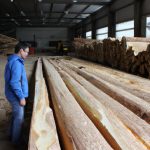
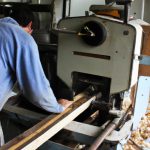
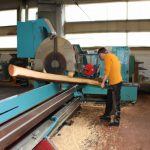


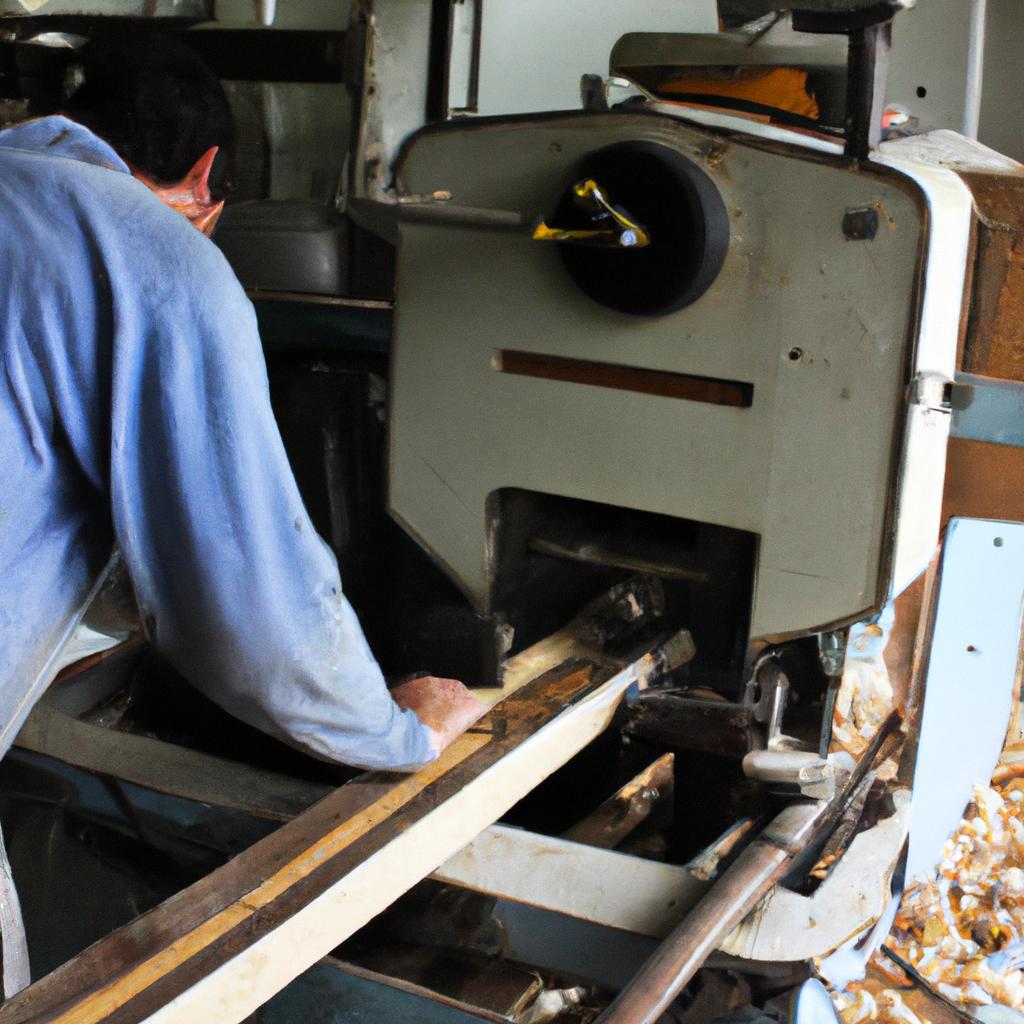
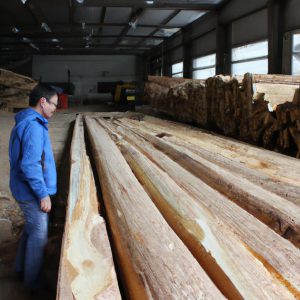
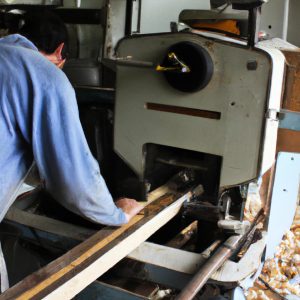
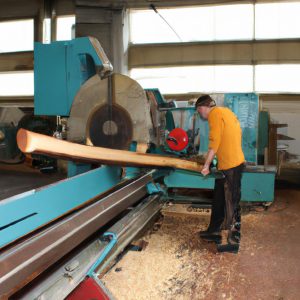
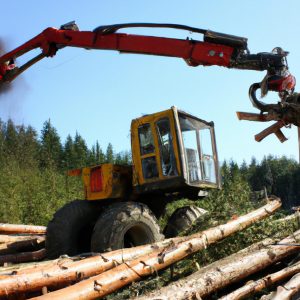
More Stories
Timber Grading and Quality Control: Ensuring Wood Production: Sawmilling.
Waste Utilization & By-Product Management in Wood Production: Sawmilling
Sawmill Operations and Processes: A Guide to Wood Production